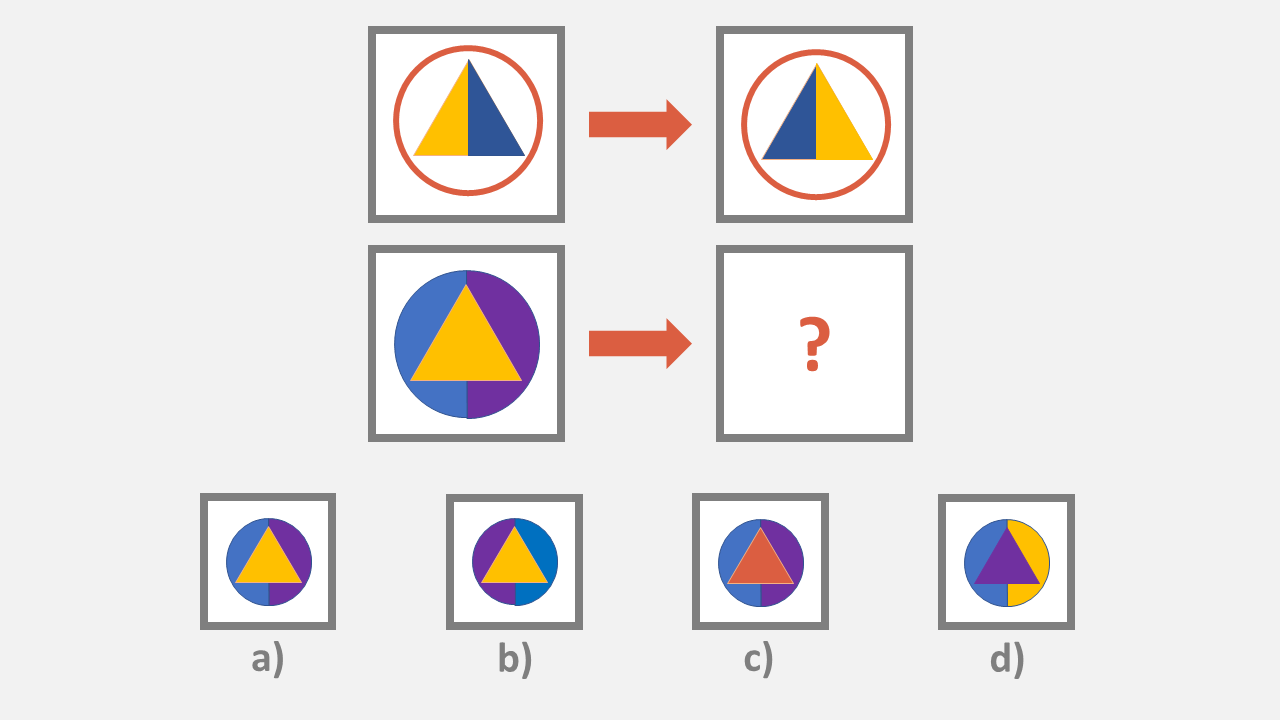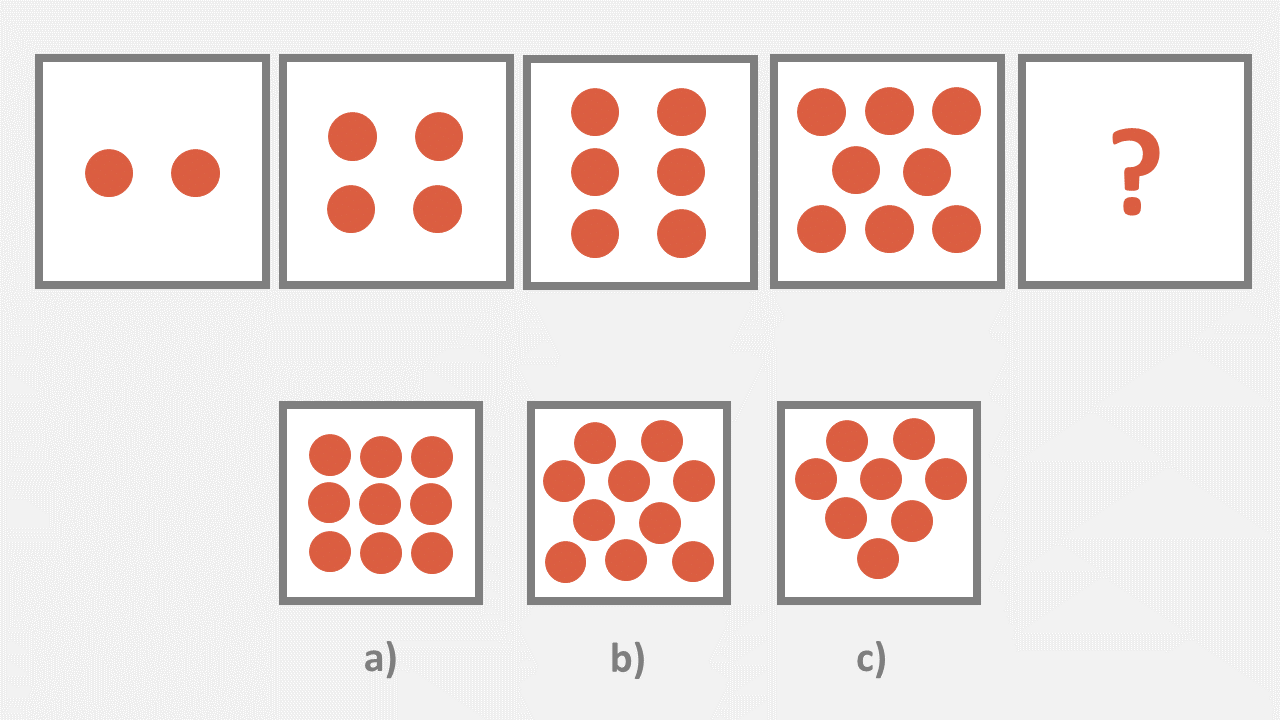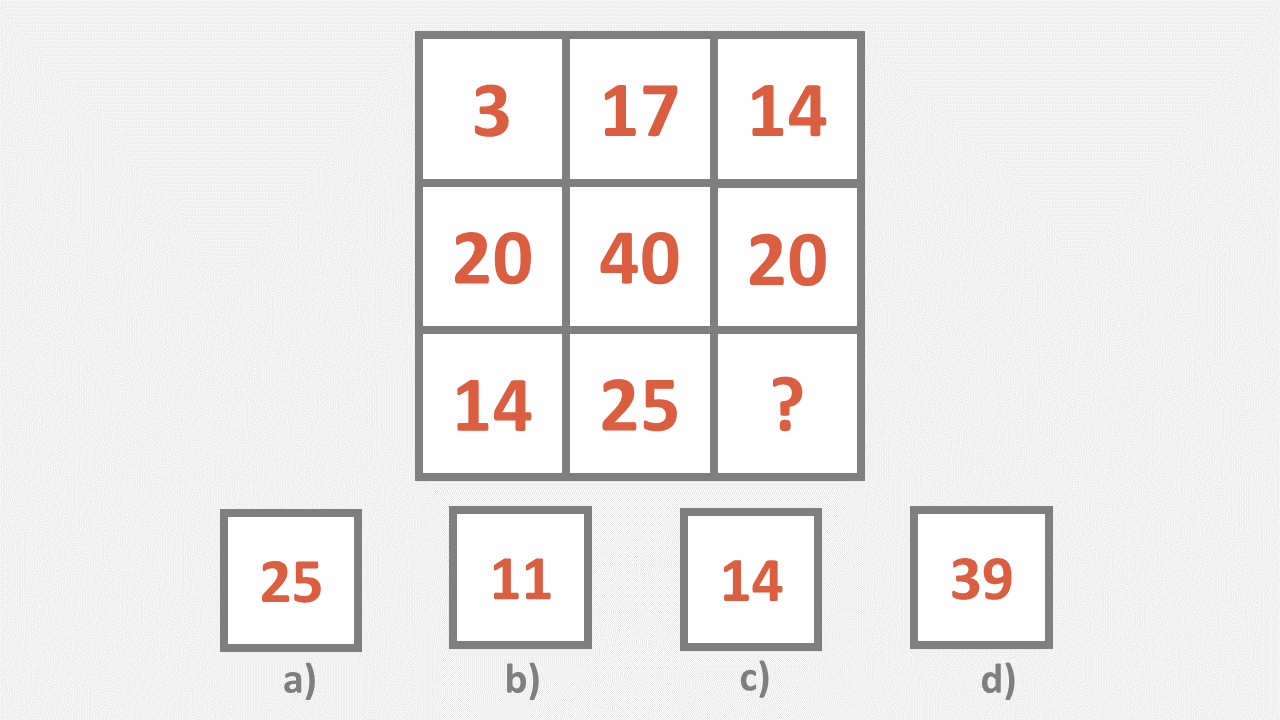How to Pass the OLSAT Test Level G in 2025
Updated November 20, 2023
The OLSAT Level G test – aka the Otis-Lennon School Ability Test – is an aptitude test high school students take when they want to apply to gifted students or higher-level/advanced courses.
It is issued by Pearson, a well-known publisher of educational materials, to assess a student’s natural abilities and aptitude. This will normally be for pupils in grades 9 to 12.
Testing both a student’s logical and abstract thinking, the OLSAT Level G Test will also be able to help identify the skills and knowledge the taker is lacking too.
For example, they might score higher on the verbal part of the exam than they would on the non-verbal. This could be a crucial factor in assessing their aptitude and which area they might need to work on.
Some students might find the actual test quite difficult, as they might not be used to answering some of the questions that feature on the exam.
This article will outline some of the questions you might see so you can get an idea. Again, producing questions a pupil might not have answered while in education will highlight their strengths and weaknesses.
Parents might also want to use the test to assess their child’s ability compared to other peers at the same institution, and this could be because they believe them to be gifted and might want to enroll them in a different school or a specialized gifted program.
There are different levels of the OLSAT tests, ranging from A to C and D to G. Each one is with a different school grade in mind.
The OLSAT Level G test will focus more on patterns, logical selection, quantitative reasoning and analogies. As for the format? This is something you will learn about in more detail below.
What to Expect on the OLSAT Level G Test in 2025
Each of the OLSAT tests will focus on seven levels, each with 21 different questions that touch upon different sub-genres.
The OLSAT Levels A, B, and C are for younger grade students from pre-kindergarten to 2nd grade, while D, E and F focus on grades 3 to 8. The OLSAT Level G is for older students from grades 9 to 12.
As there are various levels, the time in which to take the test can range from 60 minutes to 77 minutes. They will need to answer 40 to 72 questions in the allotted time.
For younger grades (levels A, B and C), a one-on-one test setting is usually the case, but, for older students, they will either sit the exam under normal test conditions or within a test group with peers.
The format of the exam does not go from easy to hard. All the questions are mixed, so you might get one more tricky question next to one that might be easier to answer. It is about being prepared for all of them.
The reason for the format is to increase the student’s confidence during the exam. It might also alleviate stress if they are not waiting for the tricky questions to appear nearer the end.
As for the questions, again, this can depend on the level the student is taking. For the OLSAT Level G test, they might see more in-depth sections of verbal and non-verbal questions.
Prepare for OLSAT Test Level G with Test Prep Online
OLSAT Level G Sample Questions for 2025
The OLSAT Level G is designed to assess older students in higher grades. This means that the type of questions and category might differ to lower grades.
Pupils taking this test will receive questions on arithmetic reasoning, sentence completion, figural analogies, logical selection, etc.
Here are some example questions you might expect to see on the test:
OLSAT Level G Verbal Comprehension
For the Verbal Comprehension part of the test, the taker will need to look at antonyms, sentence completion and sentence arrangement.
It will test a student’s ability to understand and listen to directions given verbally. It will also test how they understand different terms and how they work in context to a sentence.
OLSAT Level G Verbal Comprehension Example Questions
This will show how they can see the image and take direction from the practice question.
1. Pick the image below that shows a tree, a puppy in the bath and a cat in the background.

2. What is the opposite word to 'difficult'?
a) Fast
b) Easy
c) Hard
d) Sad
OLSAT Level G Verbal Reasoning
The Verbal Reasoning section of the exam is designed to test the student’s ability to understand relationships between words and numbers and how they can make comparisons and discover differences and draw conclusions.
Here, they will explore Arithmetic Reasoning, Logical Selection, Word and Letter Matrix, Verbal Analogies, Verbal Classification and Inference.
OLSAT Level G Arithmetic Reasoning Example Question
1. The image below shows the number of eggs Bella has bought from the shop. For every one egg Bella has purchased, her friend David has bought triple the amount – how many eggs does David have?

a) 11
b) 18
c) 15
d) 30
If you want 12-month access to all the practice resources for this test, our partner TestPrep-Online.com offers a Family Membership.
Family Membership gives you access to all the TestPrep-Online resources for the next 12 months. You will also get two separate accounts, which can be very helpful if you have two children preparing for their tests.
Get a Family Membership with 12-month access
1. Complete this sentence:
John did not understand the _____.
a) Happy
b) Question
c) Running
d) Time
OLSAT Level G Figural Reasoning
As for the Figural Reasoning part of the OLSAT Level G exam, this subsection will require students to assess patterns and shapes with fine detail.
Expect to see Figural Analogies, Figural Classifications, Figural Series and Pattern Matrix.
OLSAT Level G Figural Analogy Example Question
The images in the rows relate together in some way. The student will have to explore how they all belong together and make the right selection based on this.
How is the second image like the top two?

1. Predict the fifth shape in the sequence below.
The student will need to look at the pattern, shape and consecutive sequence in the image to select what the next image will be.

OLSAT Level G Quantitative Reasoning
Another subsection of the OLSAT Level G non-verbal section is the Quantitative Reasoning part.
This will enable the students to be tested on their ability to understand relationships with the number, deduce and compare rules in context, and explore Number Series, Numeric Inference and Number Matrix.
OLSAT Level G Number Matrix Example Question
In each number matrix, there will be a missing square. The student will have to decipher the sequence to see which number it will need to be filled with to finish the sequence.
1. Complete the missing number in the below grid.


How Is the OLSAT Level G Scored?
The OLSATs are scored using a raw score which is issued first. The raw score is calculated by adding the number of questions the exam taker got right.
For example: if they answer 50/60, then their raw score will be 50. Their score will be separated between sections, so they will receive a mark for the non-verbal section, one for the non-verbal section and an overall score altogether.
The OLSAT score is then turned into the School Ability Index score (SAI), which is calculated by turning the raw total into a mean number. If a child gets a total score of 132 or more, then they will be in the top 2%.
This is known as the Percentile Rank, which compares your child’s test score to others within the same age group. For example, if they ranked in the 80th percentile, it means they have scored higher than 80% of students of their age.
When do you get the OLSAT test level G test results? You should receive the scores within the mail around two months after the exam. They are very thorough, so they should provide enough information to assess whether your child is right for a gifted program or school.
Prepare for OLSAT Test Level G with Test Prep Online
How to Prepare for The OLSAT Test Level G in 2025
With every exam comes preparation, so if the OLSAT Level G is a test your child is looking to take, then it is imperative that you do your research beforehand to ensure you are both prepared for the types of questions, scoring systems and format of the test prior to taking it.
Here are some tips to help you help your child prepare for the OLSAT Test Level G.
Step 1. Practice Makes Perfect
This might seem like a simple solution when planning to take a test; however, you might benefit from reading up on the question types in the OLSAT level G your child might receive before they take the OLSAT G test.
This will keep you in good knowledge of what they can expect and help you practice together.
There are all types of OLSAT level G sample questions you can work on beforehand; it just takes some research. It is not so hard to find a OLSAT level G practice test online free (like the sample questions provided above). They can even take a full-length practice test, so they are more confident of time pressure.
Step 2. Familiarize Them (And Yourself) With the Test Format
As well as just looking for practice papers to gain an understanding of how to answer the OLSAT level G questions, it is important your child understands the type of format the exam comes in.
For this, you could take an OLSAT practice test level G to answer the questions and others to revise the format and prepare for what it might look like on the day.
This is helpful, so they know what to expect. For instance, the hard and easy questions are mixed in together. They might not be ready for this otherwise.
Step 3. Read the Instructions/Questions Carefully
When partaking in the practice tests, it is important the test-taker reads the questions and instructions thoroughly before starting the exam.
They might miss a vital piece of information that could forfeit the entire test. For example, they might not realize how much time they need or what tools they can and cannot use.
As for parents, this is something you can help them get used to prior to sitting the exam.
Step 4. Go Through Questions and Answers Thoroughly
Take your time going through the questions and answers with your child to ensure they really understand what is being asked of them. It will also prepare them on the day to read the questions carefully, as mentioned above.
With practice tests, you will be able to mark each one they take and figure out where they might be excelling and which areas need more work.
This is helpful to gain an understanding of what they need to practice more. Make sure they do not miss the explanations of the questions they got wrong, so they know how it works.
Step 5. Practice All Types of Questions
Although your child might excel in math and figurative reasoning, it is still important they practice all OLSAT level G questions before the exam.
Sometimes a question or sequence might come up that they are not sure of, so it is imperative to be prepared. It will also give them a chance to understand the type of math question they might receive.
However, if he or she is not confident with the verbal sub-section of the exam, then it might be worth you spending more time on that.
Step 6. Make Sure They Eat Well and Get Enough Sleep
Keeping alert before the test is key. Make sure they have plenty to eat and drink before the test day. Getting enough sleep is important, so they are not too tired on the day.
A healthy body and a calm mind will definitely improve the OLSAT level G answers score.
The OLSAT Level G test is known as one of the more difficult aptitude tests out there, even for adults. However, the exam is to assess whether a student is gifted and can be admitted to an elite school.
The test is made up of easy and harder questions that are all mixed. For example, it does not go from easy to hard. Each question, whatever its difficulty, is formatted together.
Students will need to rank in a high percentile to gain access to elite schools and gifted programs.
Therefore, it is important that if your child is looking to take the OLSAT Level G Test, they (and you) dedicate a good amount of time preparing for it.
The OLSAT Level G is designed to assess older students in higher grades, and this means that the type of questions and category might differ to lower grades.
Students taking this test can expect to see verbal and non-verbal subsections with questions on arithmetic reasoning, sentence completion, figural analogies and logical selection.
For example, the Verbal Reasoning section of the test will assess the child’s ability to understand relationships between words and numbers, and discover differences and draw conclusions.
Here they will explore: Arithmetic Reasoning, Logical Selection, Word and Letter Matrix, Verbal Analogies, Verbal Classification and Inference.
The Quantitative Reasoning section will test the pupils on their ability to decipher connections with numbers, compare rules in context and explore Number Series, Numeric Inference and Number Matrix.
A good score on the OLSAT Level G test would be if your child rankled in the 80 to 85th percentile, meaning they have scored higher than 80 to 85% higher than students within the same age group as them.
Or if you are looking at the School Ability Index (SAI) score, which is calculated by turning the raw total into a mean number. If a child gets a total score of 132 or more, then they will be in the top 2%.
A raw score will be given first. This is calculated by adding the correct number of questions the student got right. For example: if they answer 60/60, then their raw score will be 60.
Their score will be separated between the verbal and non-verbal sections. Then all markings will be added together to provide one final score.
Level G is for older students – OLSAT 9th grade to 12th. Whereas the OLSAT Levels A, B, and C are for younger grade students from pre-kindergarten to 2nd grade, while D, E, and F focus on grades 3 to 8.
As there are various levels, the time in which to take the test can range from 60 minutes to 77 minutes. They will need to answer 40 to 72 questions in the allotted time.
Each of the OLSAT tests will focus on seven levels, each with 21 different questions that touch upon different sub-genres.
The OLSAT Level G is a difficult exam, so it is imperative that you prepare before taking the test.
The student can do this via practice tests, so they can get to know the format of the test and the type of questions they might receive.
There are many different practice tests. Some are timed, so they can get used to completing questions under time constraints, whereas others might provide a study guide your child can revise with some OLSAT Level G sample questions. Either way, practice makes perfect.
We would also recommend the student gets plenty of sleep and stay hydrated prior to the test. This is to ensure they are fully ready to take the test.
The questions on the OLSAT Level G test are multiple-choice questions.
We would recommend preparing for the exam to answer the questions to the best of your ability, making a judgment call on the most logical answer to a question, rather than a blank guess with no substance behind the answer.
However, a student will not be penalized if they have guessed some of the questions. They would get the same score for that question as they would if they left it blank.
It will not hurt their score if OLSAT Level G answers have been guessed incorrectly.
To obtain an answer key for the OLSAT Level G test, you can try the following options:
- Contact the organization or institution that administered the OLSAT Level G test. They may provide you with an answer key upon request.
- Check if the test preparation materials or practice test providers offer an answer key specifically for the OLSAT Level G. Some educational websites or test prep platforms may include answer keys with their practice materials.
- Reach out to educators or teachers who are familiar with the OLSAT Level G. They may have access to answer keys or can guide you to reliable resources that provide them.
Final Thoughts
In conclusion, the OLSAT Level G test is a comprehensive assessment that evaluates the cognitive abilities of students at an advanced level.
With a focus on critical thinking, problem-solving, and reasoning skills, the OLSAT Level G is designed to challenge and identify students' higher-order thinking abilities.
To excel on this test, thorough preparation is crucial. Utilizing OLSAT practice tests Level G can be immensely beneficial.
These practice tests provide students with an opportunity to familiarize themselves with the test format, question types and time constraints they will encounter on the actual exam.
By engaging in targeted practice and honing their skills, students can enhance their performance and build confidence for the OLSAT test Level G.
It is advisable to seek out reputable educational resources and online platforms that offer OLSAT practice tests at Level G, ensuring the materials are aligned with the test content and provide accurate representation of the difficulty level.
By combining diligent preparation and a growth mindset, students can optimize their performance on the OLSAT Level G and showcase their advanced cognitive abilities.





